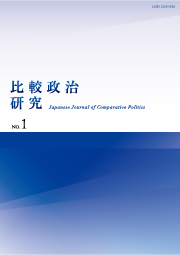Current issue
Displaying 1-5 of 5 articles from this issue
- |<
- <
- 1
- >
- >|
-
Revolution and Spatial Focal Point: Symbolic Sanctification and Its Effect on Subsequent Revolutions2025Volume 11 Pages 1-20
Published: 2025
Released on J-STAGE: February 27, 2025
Download PDF (1080K) -
2025Volume 11 Pages 21-37
Published: 2025
Released on J-STAGE: March 18, 2025
Download PDF (1063K) -
2025Volume 11 Pages 39-57
Published: 2025
Released on J-STAGE: April 03, 2025
Download PDF (1686K) -
2025Volume 11 Pages 59-77
Published: 2025
Released on J-STAGE: October 02, 2025
Download PDF (1176K) -
2025Volume 11 Pages 79-94
Published: 2025
Released on J-STAGE: December 04, 2025
Download PDF (835K)
- |<
- <
- 1
- >
- >|
